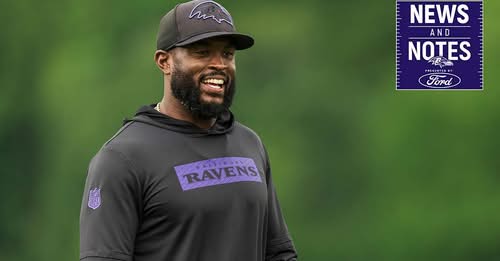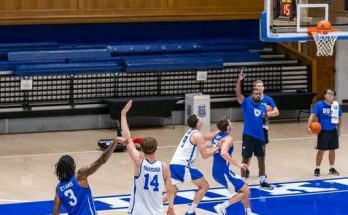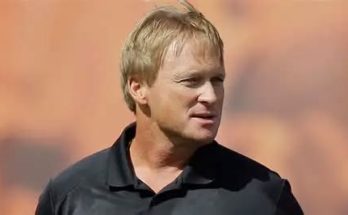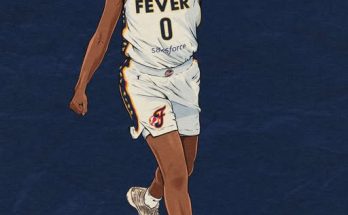The Baltimore Ravens are not just reloading in 2025—they’re evolving. At the heart of that evolution is defensive coordinator Zach Orr, who wasted no time setting the tone for what could be one of the most dominant defensive campaigns in franchise history. During his recent media availability, Orr delivered a statement that echoed through the halls of the Under Armour Performance Center and reverberated across the league: this year’s Ravens defense is “light years ahead” of where it was just a season ago.
Coming off a 2024 campaign that saw the Ravens defense finish top five in most major statistical categories, it would seem hyperbolic to suggest such a dramatic leap forward. But for Orr, who now commands the defense following Mike Macdonald’s departure to become head coach of the Seattle Seahawks, this isn’t about improving numbers—it’s about evolution. It’s about taking a group that already imposed its will on opponents and transforming it into a truly generational unit that controls the game at every level.
What makes Orr’s comment more than just offseason hype is the detailed transformation he’s orchestrated behind the scenes. In just a few months, he’s revamped schemes, accelerated player development, and injected a palpable energy into the locker room. While Baltimore’s defense had already boasted fearsome playmakers like Roquan Smith, Kyle Hamilton, and Justin Madubuike, Orr has added layers of complexity and aggression to how the team deploys them. It’s no longer about reacting. It’s about dictating terms.
Take Roquan Smith, for example. Already one of the best linebackers in the NFL, Smith has been handed even more responsibility in Orr’s system. He’s now calling audibles at the line, shifting fronts pre-snap, and becoming not just the emotional leader of the defense, but the intellectual engine. Under Orr’s watch, Smith is being empowered to elevate those around him, helping to bring second-year linebacker Trenton Simpson along faster while coordinating with Kyle Hamilton to create disguised coverages that are baffling even the Ravens’ veteran quarterbacks in camp.
Orr’s approach has always been cerebral, but in 2025, it’s also aggressive. He has taken a cue from the Ravens’ historic defenses of the 2000s—the Ray Lewis and Ed Reed era—but modernized it for today’s offensive complexities. Where those defenses smothered opponents with brute force and raw talent, Orr’s version adds deception, motion, and trap schemes that rely on anticipation and split-second execution. The defense isn’t just trying to get stops—they’re trying to bait quarterbacks into mistakes, score points themselves, and impose psychological dominance by the second quarter.
The results at training camp have been overwhelming. Quarterback reps are routinely disrupted, not just by the front seven but by unexpected blitzes and coverage rotations. Rookie receiver Zay Flowers has noted in interviews how difficult it’s been to even recognize coverage shells pre-snap. Lamar Jackson has praised the defense’s disguise work and indicated that every throw in practice feels like a chess match. According to sources inside the team, even seasoned veterans like Mark Andrews have been stymied at times by the creativity and cohesion of the unit.
Orr’s fingerprints are all over this shift. A former undrafted linebacker who once starred on this very defense, Orr knows the Ravens ethos intimately. He brings not only schematic expertise but an emotional connection to the players. This isn’t a coordinator issuing commands from a pedestal. This is a coach who bleeds black and purple, who players respect deeply, and who communicates with them in the language of war—not just X’s and O’s. His leadership style combines passion, accountability, and a clear vision. Players aren’t just learning a new system—they’re buying into a philosophy.
That philosophy hinges on versatility. The Ravens are no longer confined to traditional base defenses. They’re cycling through nickel, dime, even quarter packages on early downs. They’re using positionless football to their advantage. Kyle Hamilton may line up at deep safety, then drop into the slot or even blitz from the edge. Geno Stone is being tested at both safety and corner. Young linemen like Travis Jones and Broderick Washington are flashing in multiple gap assignments. The entire defensive unit is a fluid organism, capable of adjusting on the fly without sacrificing speed or discipline.
Baltimore’s front office deserves credit for feeding this defensive renaissance. While they let veterans like Patrick Queen walk in free agency, they doubled down on youth, speed, and flexibility. First-round draft pick Darius Bratton, a cornerback out of Alabama, has already turned heads with his physicality and instincts. In the third round, they nabbed edge rusher Jacoby Mitchell, who’s drawn comparisons to Terrell Suggs for his motor and bend. Both rookies are being rotated into the first-team defense, a sign of how seriously Orr is pushing for depth and real-time experience.
The entire linebacker room, once seen as a question mark, now feels like a strength. Trenton Simpson has made a noticeable jump in both confidence and command, largely thanks to the mentorship of Smith and the clarity Orr has brought to his role. The Ravens have also experimented with a three-linebacker look that features Simpson, Smith, and Malik Harrison on early downs, only to morph into an exotic sub-package with safeties replacing linebackers post-snap. It’s a dizzying puzzle for opposing offenses to solve, and Orr wants it that way.
Even the secondary, long a Baltimore stronghold, is evolving. Marlon Humphrey looks rejuvenated after a relatively quiet 2024, citing Orr’s focus on situational awareness and turnover creation. Cornerbacks coach Dennard Wilson, retained from the previous regime, has worked closely with Orr to integrate new pattern-matching techniques and disguised cover-4 looks that feel lifted straight from Bill Belichick’s playbook. The communication has been cleaner, the reactions sharper. Simply put, the defense is faster—both physically and mentally.
But perhaps the most striking element of this “light years” comment is the belief behind it. The confidence. The unapologetic tone. This isn’t an exaggeration meant to fire up the fanbase. It’s a belief that’s clearly been earned inside the building. This defense believes it can be the best in football. Not top five. Not top three. The best. And they’re training like it.
The Ravens have always been defined by defense. From the punishing dominance of 2000 to the Ed Reed ball-hawking era, to Terrell Suggs’ unrelenting aggression, Baltimore has never shied from its defensive roots. But what Zach Orr is doing now could very well usher in a new chapter—one that isn’t just a return to dominance but a reinvention of what dominance looks like in the modern NFL. It’s no longer enough to be physical and fast. This defense is designed to outthink you, outlast you, and outperform you—every single down.
Orr’s promotion came with pressure, but he’s worn it like armor. Every time he steps to the microphone, it’s clear he’s not satisfied with merely maintaining the Ravens’ high standard. He’s determined to raise it. He sees this group as more than a collection of talented players. He sees it as a force. A unit capable of shifting the entire identity of a game, a season, a championship run.
There’s a long road between offseason declarations and playoff wins. Injuries will test the depth. Opposing coordinators will study tendencies. And adversity, in some form, will come knocking. But if this defense truly is light years ahead of last year’s version—which was already one of the best in football—then the rest of the NFL should take notice now. Because the 2025 Ravens defense isn’t coming. It’s already here. And it might be the best weapon Baltimore has as it chases another Lombardi Trophy.



